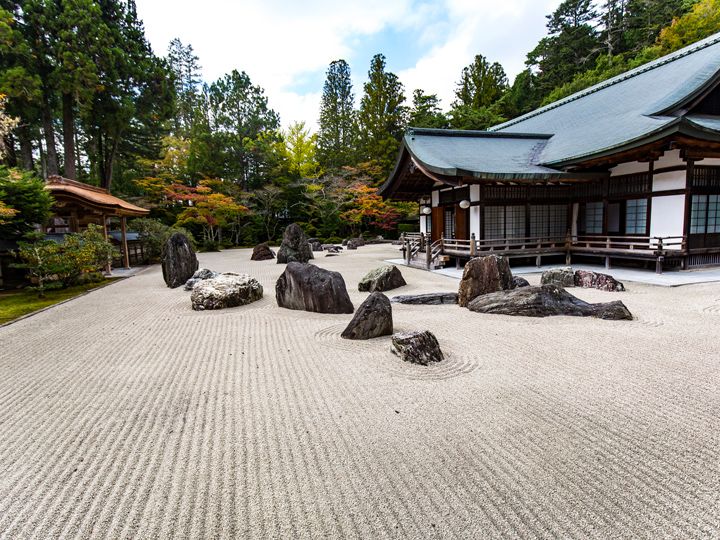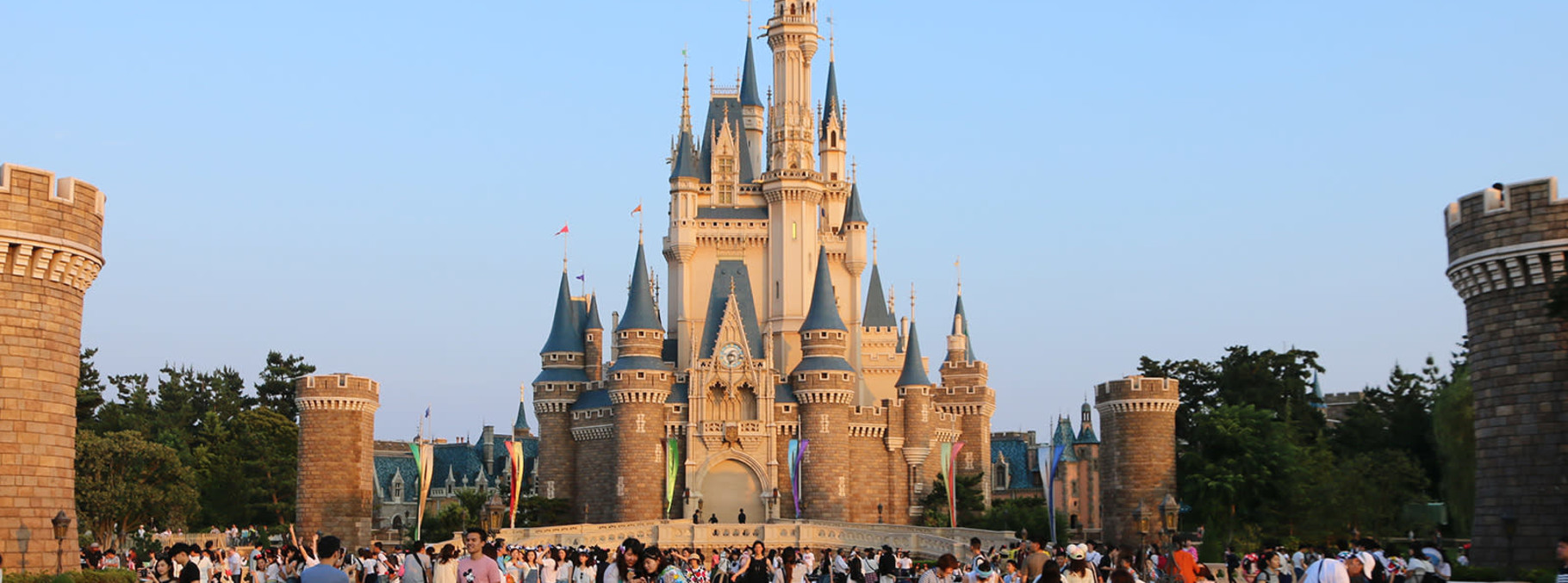Koyasan


(Source: 土橋わいわいブログ)
Konpon Daito Pagoda in Danjo Garan
The pagoda is a symbol of the main training center of the Shingon Esoteric Buddhism. It is 48.5 m high and is located in Danjo Garan which is one of the two most sacred places of Koyasan. The style of the pagoda is called Tahoto that has a columnar structure on top of a square base with a pyramid roof. This pagoda was the first building in Japan that adopted this style.

(Source: 関西観光記 )
Approach to Okunoin
The other sacred place is Okunoin which is the heart of the Shingon sect (faith in Kobo Daishi). It holds Gobyo (mausoleum of Kobo Daishi) and Torodo Hall. There are over 200,000 tombstones of emperors and ordinary people on the both sides of the 2 km approach. There are also tombs for notable feudal lords there.

(Source: 今を生きる大阪市電の敷石。)

(Source: ふくいのりすけ)
Grand Head Temple of Koyasan Shingon Sect: Kongobuji
Kongobuji is the most important temple of over 3,600 Koyasan Shingon temples that are scattered throughout Japan. The temple consists of Shuden (main hall), Okuden Hall and Betsuden (annex). The sliding screen paintings in each building are very impressive. There are many other points of interest such as one of the largest rock gardens (Zen garden) in Japan called Banryutei.

(Source: 【日本人●荒川ヒロシ!Carry on! Carry out!】 )
Staying at a Temple: Shukubo
There are over 50 shukubo in Koyasan for overnight visitors. Visitors can experience a small part of Zen training here. They offer shojin ryori (a vegetarian dish), prayer in the early morning, sutra copying and mediation.

(Source: 食べログ)

(Source: 土橋わいわいブログ)
Konpon Daito Pagoda in Danjo Garan
The pagoda is a symbol of the main training center of the Shingon Esoteric Buddhism. It is 48.5 m high and is located in Danjo Garan which is one of the two most sacred places of Koyasan. The style of the pagoda is called Tahoto that has a columnar structure on top of a square base with a pyramid roof. This pagoda was the first building in Japan that adopted this style.

(Source: 関西観光記 )
Approach to Okunoin
The other sacred place is Okunoin which is the heart of the Shingon sect (faith in Kobo Daishi). It holds Gobyo (mausoleum of Kobo Daishi) and Torodo Hall. There are over 200,000 tombstones of emperors and ordinary people on the both sides of the 2 km approach. There are also tombs for notable feudal lords there.

(Source: 今を生きる大阪市電の敷石。)

(Source: ふくいのりすけ)
Grand Head Temple of Koyasan Shingon Sect: Kongobuji
Kongobuji is the most important temple of over 3,600 Koyasan Shingon temples that are scattered throughout Japan. The temple consists of Shuden (main hall), Okuden Hall and Betsuden (annex). The sliding screen paintings in each building are very impressive. There are many other points of interest such as one of the largest rock gardens (Zen garden) in Japan called Banryutei.

(Source: 【日本人●荒川ヒロシ!Carry on! Carry out!】 )
Staying at a Temple: Shukubo
There are over 50 shukubo in Koyasan for overnight visitors. Visitors can experience a small part of Zen training here. They offer shojin ryori (a vegetarian dish), prayer in the early morning, sutra copying and mediation.

(Source: 食べログ)





